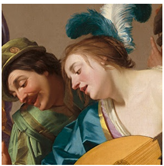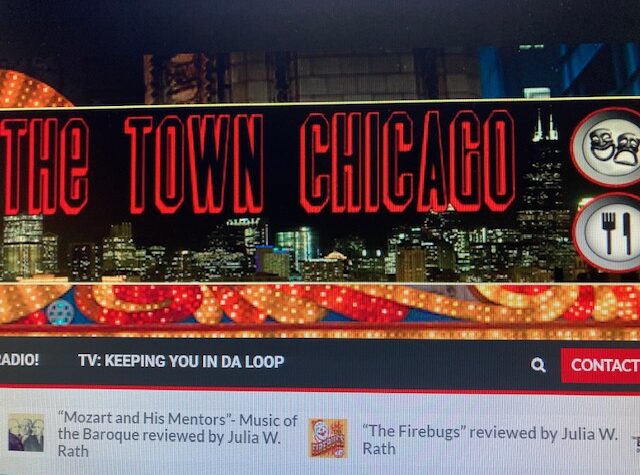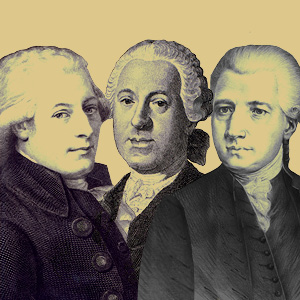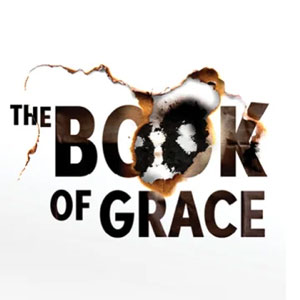
 Highly Recommended! **** In a robust performance, early music specialist John Butt takes the stage to conduct two performances of the Music of the Baroque Orchestra, featuring works by Arcangelo Corelli, Antonio Vivaldi, Johann Sebastian Bach, and Tomaso Giovanni Albinoni. The bulk of the program focuses on the evolution of the concerto, from the methodical Corelli to the more “mix and match” Vivaldi and his colleague Albinoni, who was one of the first in Italy to write for the oboe, a new instrument. Bach, who transcribed at least nine of Vivaldi’s concertos, is presented in this program to highlight the Italianesque air of the music of the era in combination with the influence of the fashionable French. In his highly popular and joyful Orchestral Suite No. 1 in C Major, BWV 1066, he brings together various types of early 18th century dance music to suit an assortment of musical and cultural tastes.
Highly Recommended! **** In a robust performance, early music specialist John Butt takes the stage to conduct two performances of the Music of the Baroque Orchestra, featuring works by Arcangelo Corelli, Antonio Vivaldi, Johann Sebastian Bach, and Tomaso Giovanni Albinoni. The bulk of the program focuses on the evolution of the concerto, from the methodical Corelli to the more “mix and match” Vivaldi and his colleague Albinoni, who was one of the first in Italy to write for the oboe, a new instrument. Bach, who transcribed at least nine of Vivaldi’s concertos, is presented in this program to highlight the Italianesque air of the music of the era in combination with the influence of the fashionable French. In his highly popular and joyful Orchestral Suite No. 1 in C Major, BWV 1066, he brings together various types of early 18th century dance music to suit an assortment of musical and cultural tastes.
Butt does a phenomenal job of multitasking! He not only conducts the orchestra but simultaneously plays a harpsichord that sports more than one keyboard. Extensions have been placed on each of the legs so that he can play while standing. His technique is especially notable in the opening number Corelli’s Concerto Grosso in F Major, opus 6, no. 6, and also in Vivaldi’s Concerto for Strings in A Major, RV 158.
During Sunday’s concert, the audience learned that Vivaldi had left us with 39 bassoon concertos, more than that for any other instrument he wrote for. Therefore it is only fitting that we would see a bassoonist play one of Vivaldi’s major compositions, namely, his Bassoon Concerto in C Major, RV472. William Buchman, in a sparkling performance, puts the exclamation point on Vivaldi’s work. It was wonderful listening to the difficult solo part in the third (allegro) section where Buchman switches between the tenor and bass range and between staccato and legato sixteenth note runs with a fantastic job of double-tonguing. Following that, Anne Bach, on oboe, beautifully executes Albinoni’s Oboe Concerto in D Minor, opus 9. no. 2, one of the composer’s most famous pieces of music, known for its adagio movement. Both soloists then team up with renown flautist Mary Stolper at the end of the program for Vivaldi’s Concerto for Flute, Oboe & Bassoon in F Major, RV 570. Listening to the power of three fine soloists is most impressive!
One of the most outstanding composers of the Baroque era, Vivaldi is unequaled.* It was a delight to hear such a great performance of his work—and, of course, that of his friends.
“Vivaldi and Friends” by the Music of the Baroque Orchestra took place at the North Shore Center for the Performing Arts, 9501 Skokie Boulevard, Skokie (Sunday, October 18th), and at the Harris Theatre, in Millennium Park, 205 W. Randolph Drive, in Chicago (Monday, October 19th). Both concerts began at 7:30 p.m.
For more information about these and future Music of the Baroque performances, including times, dates, and locations, please go to: https://www.baroque.org/.
Music of the Baroque is a resident company of the North Shore Center for the Performing Arts. To learn more about the venue, their future offerings, and ticket prices, visit: https://northshorecenter.org/.
To learn more about the Harris Theater, their future offerings, and ticket prices, go to: https://www.harristheaterchicago.org/.
These performing arts venues take part in a unified policy requiring patrons to present proof of full COVID-19 vaccination. Properly worn face masks are required for all patrons regardless of vaccination status.
*Note that in these two concerts, the Music of the Baroque orchestra lacks percussion instruments. Included in the mix is a bass instrument called the theorbo, a fourteen-stringed plucked instrument in the lute family, which was used in the 16th through 18th centuries.






More Stories
Seattle Sutton- month two
The Jeff Awards- 2024 season- Non-Equity
Film Fest comes to Chicago